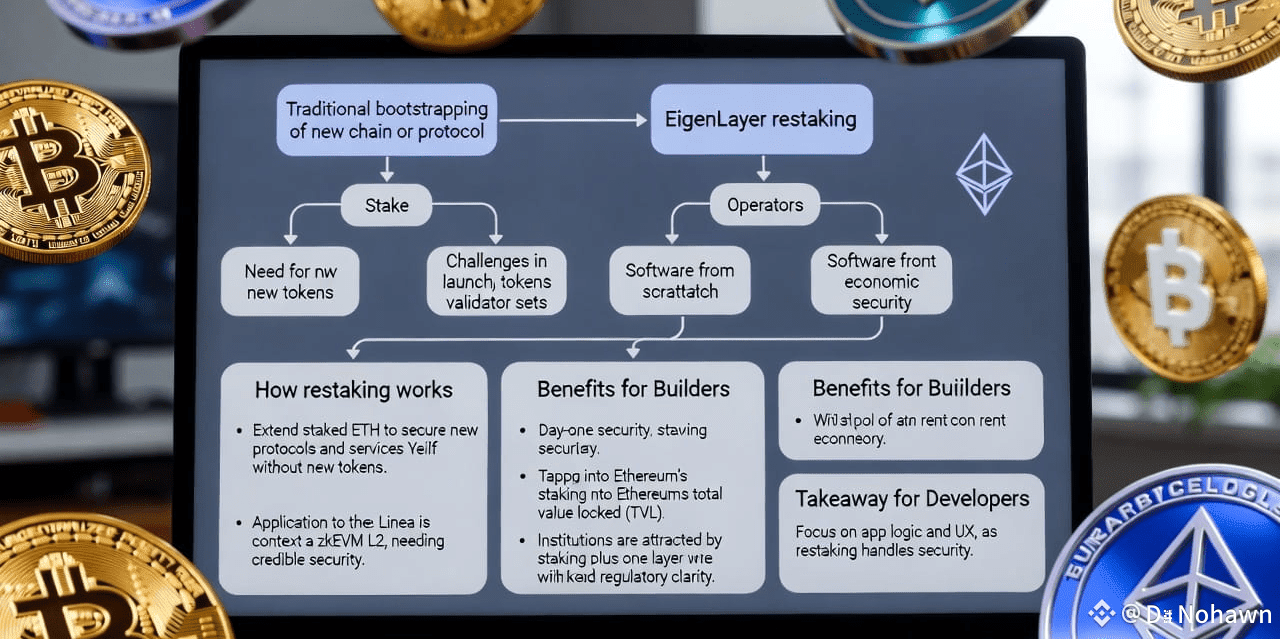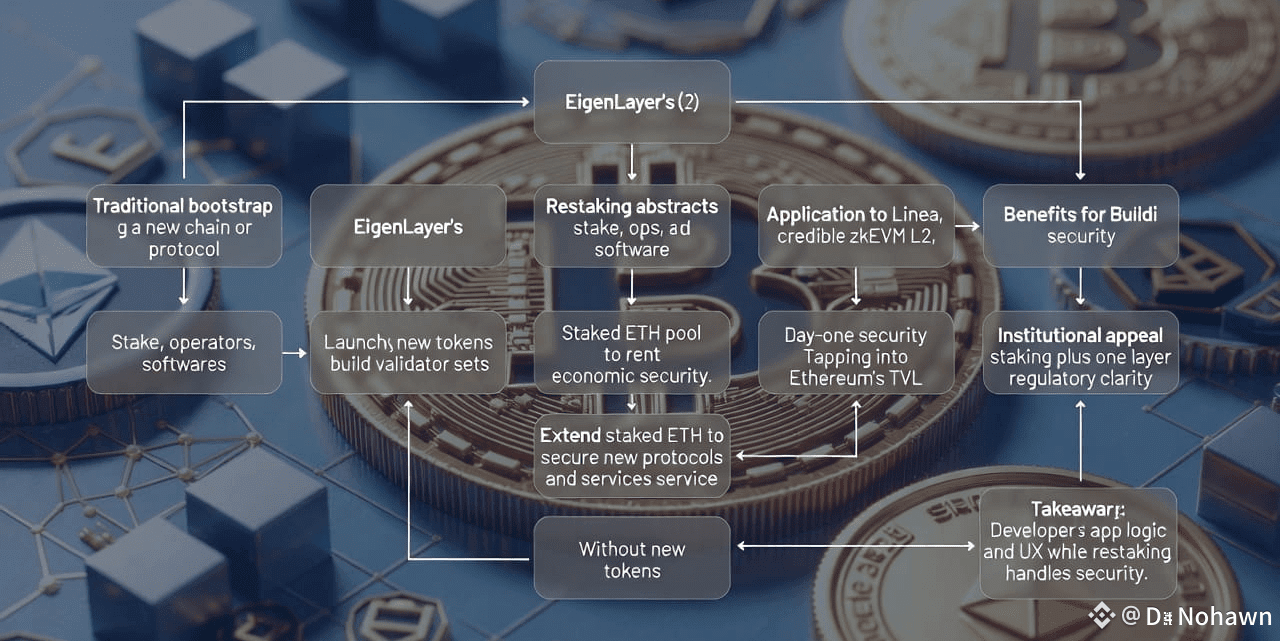Restaking is one of those ideas that sounded niche the first time people heard it, and then quietly rewired the entire way crypto infrastructure can be bootstrapped. At the simplest level, every blockchain is made of three ingredients: you have stake, you have operators, and you have software. BSC, for example, uses BNB as stake, BSC operators, and Ethereum’s Geth software. Avalanche has its own combination. Traditionally, if you wanted to launch a new protocol or a new chain, you had to go through the whole painful cycle of bootstrapping those three from scratch, with all the time, risk, and token incentives that implies.

EigenLayer stepped in and said: what if we could abstract that away and let any stake secure any operator set running any software? After the merge, there was a massive pool of staked ETH just sitting there, securing Ethereum and not doing much else. Restaking is the mechanism that lets that economic security be “rented” to secure new protocols and services. Instead of launching a new token just to get a validator set off the ground, builders can tap into Ethereum’s existing security budget and use it to secure their own services.
For builders on Linea, this is a big deal. Linea is a zkEVM L2 that wants to be the place where ambitious apps are actually deployed, not just imagined. But ambitious apps need credible security from day one. With restaking, a Linea builder doesn’t have to wait until they have a massive TVL or their own token with deep liquidity before they can say, “this protocol is strongly secured.” They can tap Ethereum’s staked ETH through EigenLayer and essentially bootstrap institutional-grade security from day one.
Because EigenLayer is Ethereum-native and Ethereum-aligned, the security story lines up perfectly with Linea’s positioning: Linea is Ethereum scaled, not an “alt” ecosystem. If Ethereum is the institution chain, then restaking is how Ethereum’s security reaches out into new services, or AVSs, that live across different chains — including Linea.

That’s also why restaking can be easier for institutions to swallow than jumping straight into raw DeFi: conceptually, it’s just staking plus one more layer. Staking is already getting regulatory clarity and operational comfort. Restaking says, “okay, you know that yield stream you understand from staking? Here’s how you can carefully extend that to secure new services for additional basis points,” instead of asking institutions to change their entire mental model.
For developers on Linea, the takeaway is simple: you get a path to launch services that are secured by Ethereum’s staked ETH without reinventing a validator community or a new incentive token. You can focus on your app logic and user experience while restaking handles the heavy lifting of crypto-economic security in the background. That’s exactly the kind of leverage that lets an ecosystem move faster without sacrificing trust.




